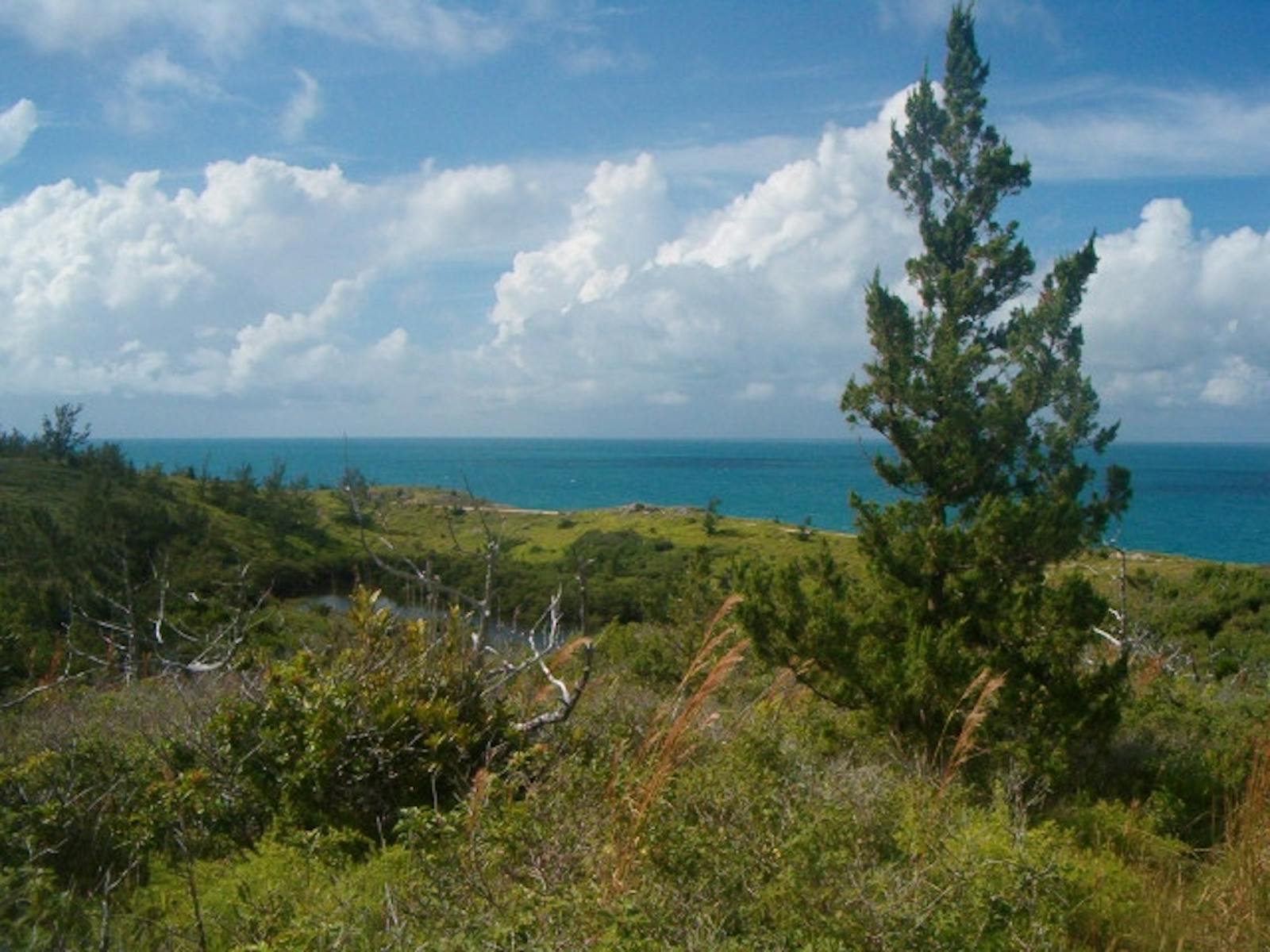Bermuda Subtropical Conifer Forests
The ecoregion’s land area is provided in units of 1,000 hectares. The conservation target is the Global Safety Net (GSN1) area for the given ecoregion. The protection level indicates the percentage of the GSN goal that is currently protected on a scale of 0-10. N/A means data is not available at this time.
Bioregion: Bermuda (NA26)
Realm: Northern America
Ecoregion Size (1000 ha):
4
Ecoregion ID:
325
Conservation Target:
N/A
Protection Level:
N/A
States: UK: Bermuda
The Bermuda Islands are an isolated, crescent-shaped chain of more than 150 limestone islands distinguished by the northernmost mangrove swamps and tropical coral reefs in the Atlantic Ocean, thanks to the moderating influence of the Gulf Stream. The islands lie 1,070 km east-southeast of Cape Hatteras, North Carolina. Their isolation from major land masses resulted a low number of native species but a high proportion of endemic species, many of which have gone extinct since settlement. The porous coralline limestone that distinguishes the islands was formed from wind-blown calcareous sand and lies on top of a volcanic pedestal along the mid-Atlantic ridge. Though moderately hilly, elevations are low, peaking at 79 m. The shoreline includes bays, inlets, and coral sand beaches.

The flagship species of the Bermuda Subtropical Conifer Forests ecoregion is the Bermuda petrel (cahow). Image credit: Creative Commons
The climate of Bermuda is tropical, closely bordering subtropical, with no recorded frosts or freezes. The vegetation of the uplands was dominated by dense stands of Bermuda cedar (a juniper), Bermuda palmetto, and Bermuda olivewood, all endemic to the islands. Mangrove swamps dominated coastal bays and (uniquely) inland saltwater ponds connected to the sea by submarine fissures. Black and red mangrove and buttonwood are present, but not white mangrove.
Only 165 of the approximately 1,000 vascular plants are native, and 15 of those are endemic. Other endemic species include 40 mosses, 10 lichens, one reptile (the Bermuda skink), two birds (the Bermuda petrel, also known as the cahow, and a subspecies of white-eyed vireo known locally as the “chick of the village”), at least 41 insects, and more than a dozen other invertebrates. Besides the Bermuda skink, only one other native reptile is known from the islands—the diamondback terrapin, not yet assigned subspecies status but shown by DNA analysis to be closely related to terrapins in the Carolinas. No native amphibians occur on the islands, and the only native mammals are five species of bats. Many of the endemic species, including at least 16 insects, have gone extinct over the last century.
The story of the Bermuda petrel (cahow) is interesting and encouraging. Due to killing by early human visitors to the islands and introduced pigs, this bird was thought to be extinct by the mid-1600s, only to be rediscovered in 1951. Subsequent conservation efforts have resulted in guarded recovery, despite setbacks from hurricane storm surges.
Bermuda is properly lauded for its early conservation laws, including an attempt to protect the cahow and other birds as early as 1616 and limiting the cutting of cedar by 1622. Its current protected areas, though limited in total area, are comprehensive and well managed. Nevertheless, due to clearing for agriculture and settlement, only about 10% of Bermuda’s native vegetation remains today.
An estimated 95 percent of the remaining Bermuda cedars were destroyed between 1946 and 1951 following the accidental introduction of two coccoid scale insects, although subsequent reforestation using a scale-resistant strain allowed the cedar to recover from 1% to roughly 10% of its former distribution; the introduction of casuarina and other non-native plants have hampered full recovery. Of the 1.16 km2 of inland peat marshes present in 1900, only about 0.48 km2 remain. Mangrove swamps have been reduced to small, scattered patches. Bermuda is one of the most densely populated countries in the world and receives more than a half a million tourists annually, more than 80% from the United States.iii
Priority conservation actions for the next decade are to: 1) greatly increase the coverage of native vegetation and the network of protected areas, which will require extensive restoration and management of human footprint; 2) curtail the introduction of non-native species and control or eradicate established populations of non-native species; and 3) develop a strategy and specific actions to adapt to sea-level rise.
Citations
1. Mastny, L. Undated. Bermuda. Tropical and Subtropical Coniferous Forests. World Wildlife Fund. https://www.worldwildlife.org/ecoregions/na0301
2. Rueger, B. F. and T. N. von Wallmenich. 1996. Human impact on the forests of Bermuda: the decline of endemic cedar and palmetto since 1609, recorded in the Holocene pollen record of Devonshire Marsh. Journal of Paleolimnology 16: 59-66.
3. Procter, D., and L. V. Fleming (eds.). 1999. Biodiversity: the UK Overseas Territories. Peterborough, Joint Nature Conservation Committee.



